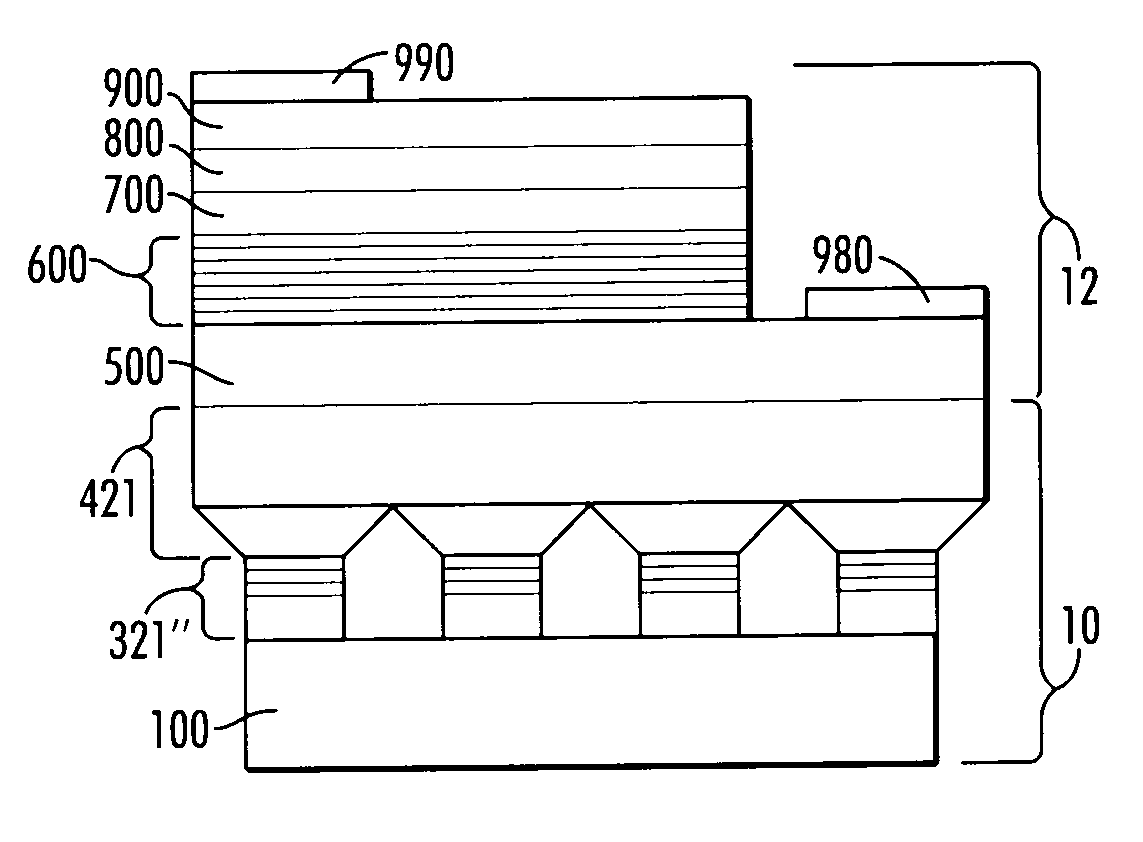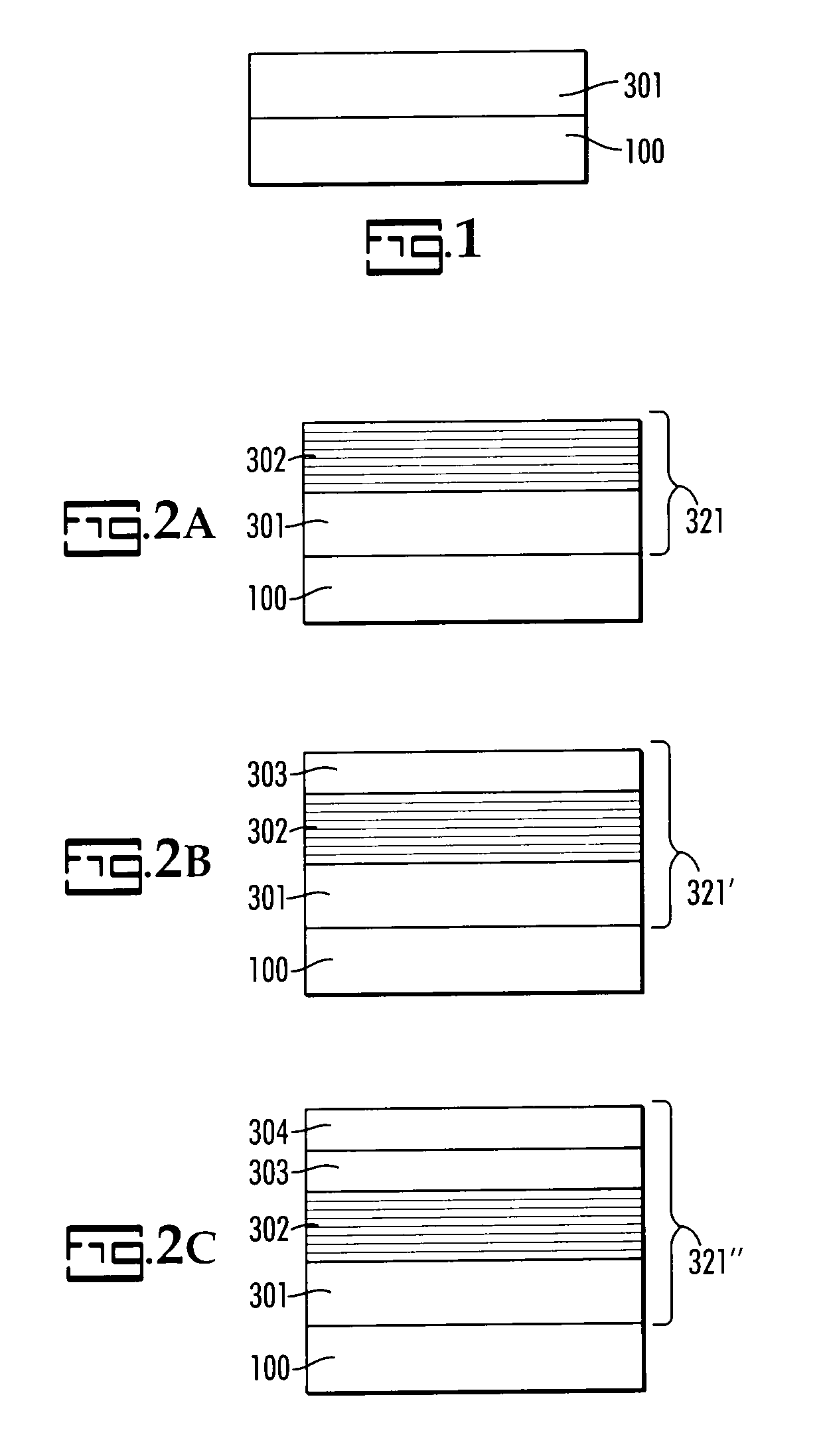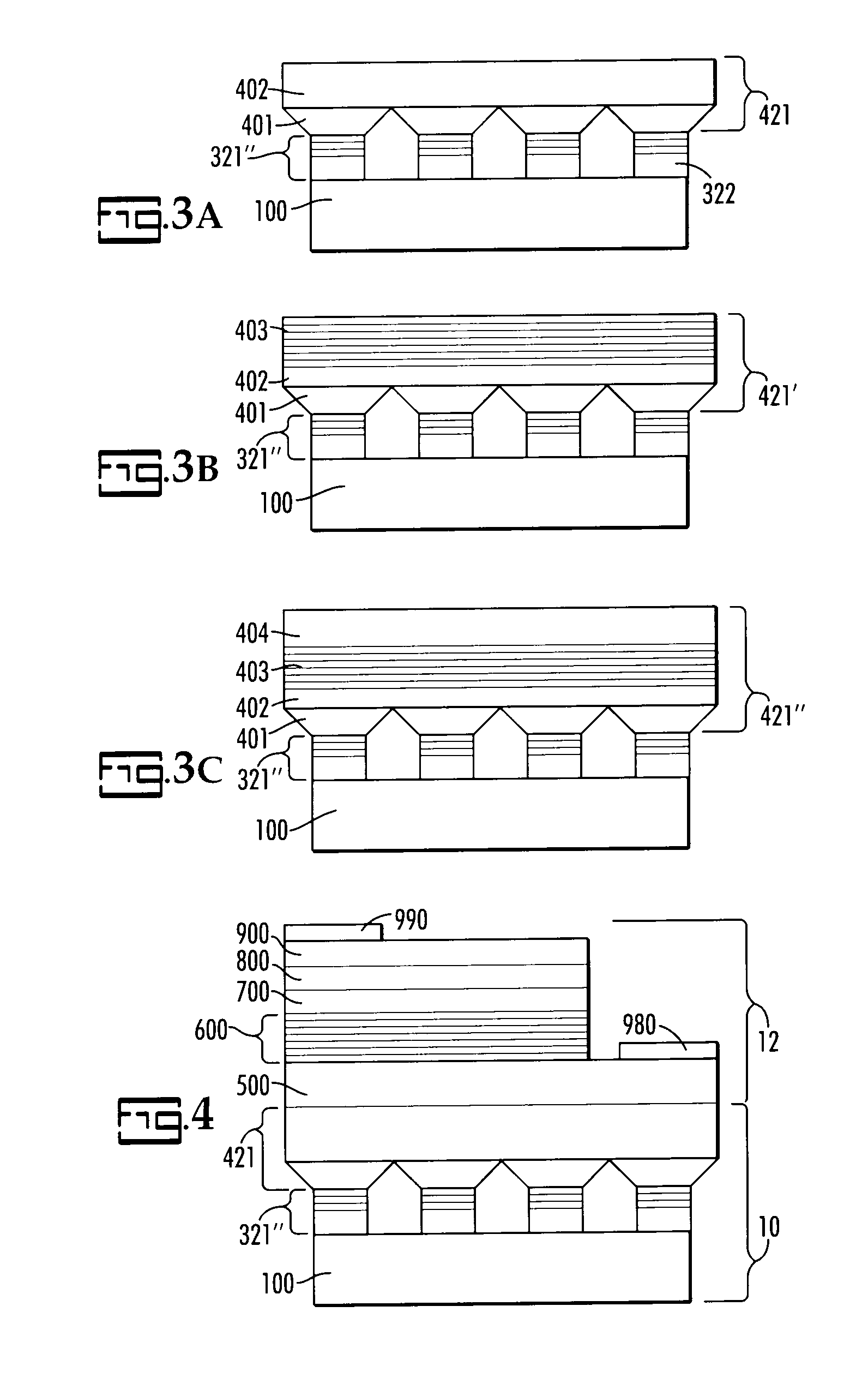Deep ultraviolet light emitting device and method for fabricating same
a technology of ultraviolet light and light-emitting diodes, which is applied in the direction of semiconductor devices, electrical devices, nanotechnology, etc., can solve the problems of crystalline defects, difficult manufacturing, and thermal mismatch between iii-nitride lattice and thermal mismatch, and achieve the effect of reducing thermal impedance and superior performance of the present light-emitting diodes
- Summary
- Abstract
- Description
- Claims
- Application Information
AI Technical Summary
Benefits of technology
Problems solved by technology
Method used
Image
Examples
Embodiment Construction
[0027]The present invention is a light-emitting device (LED) and a method for making an LED, particularly one that emits deep ultraviolet light. In particular, it is a template 10 that serves as a platform for an ultraviolet light-emitting structure 12 as shown in FIG. 4. Briefly, template 10 includes a substrate, and a first buffer layer added onto the substrate as the first step in forming the LED wafer. The first buffer layer is then etched to form a pattern of trenches with etch depth greater than or equal to 0.4 μm if the buffer is AlN and the substrate is sapphire, or greater than or equal to 0.1 μm if the first buffer layer consists of one or more AlInGaN layers. After patterning the wafer, a second buffer is applied to the first buffer to cause the patterned wafer to coalesce. Next, the ultraviolet light-emitting structure 12 is applied to template 10. First, a semiconductor layer having a first type of conductivity is applied, followed by several layers forming a quantum-we...
PUM
 Login to View More
Login to View More Abstract
Description
Claims
Application Information
 Login to View More
Login to View More - R&D
- Intellectual Property
- Life Sciences
- Materials
- Tech Scout
- Unparalleled Data Quality
- Higher Quality Content
- 60% Fewer Hallucinations
Browse by: Latest US Patents, China's latest patents, Technical Efficacy Thesaurus, Application Domain, Technology Topic, Popular Technical Reports.
© 2025 PatSnap. All rights reserved.Legal|Privacy policy|Modern Slavery Act Transparency Statement|Sitemap|About US| Contact US: help@patsnap.com



